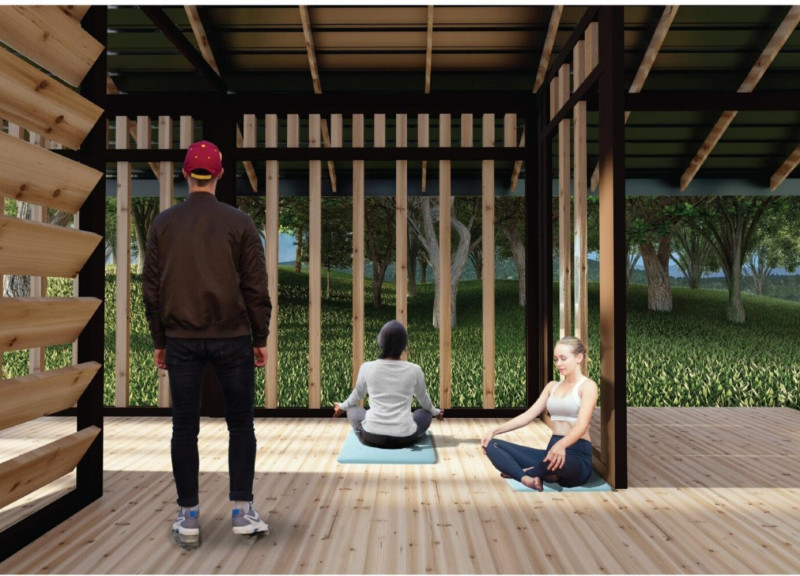5 key facts about this project
The meditation space is designed to create an environment that supports personal reflection and tranquility. It is organized from front to back, allowing individuals to navigate the space according to their needs. Integrated flower essence altars provide a connection to nature while enhancing the overall meditative experience. The concept is grounded in the idea that meditation relates closely to one's inner self and self-discipline, which is essential to the space's purpose.
Light and Atmosphere
The role of light in the space is significant. Vertical and horizontal wooden battens are used to let sunlight filter through, enriching the atmosphere. This thoughtful arrangement creates a calming visual quality, making the interior more inviting. Key areas are positioned to maximize sunlight throughout the day, ensuring that natural light is both a design element and a contributor to the meditative environment.
Spatial Arrangement
The layout of the meditation space is carefully planned to promote both personal reflection and group interaction. Different enclosures define various areas, allowing for both privacy and connection. Users can easily transition from engaging in group activities to seeking solitude, supporting a variety of meditation practices. This organization fosters a welcoming and functional environment tailored to personal experiences.
Materiality and Functionality
Timber is the primary material chosen for the space, selected for its ability to create warmth and comfort. Light tone wood, specifically spruce, forms the seat and flower altar, while dark tone wood, known as charred Accoya, is used for the wooden slats and pedestal. Each material contributes to the restorative quality of the environment, emphasizing the connection between nature and the experience of the space.
Versatile Design Elements
A distinctive feature of the design is the altar, which functions both as a chair and a table. This dual purpose makes it adaptable to the user's needs throughout the day. By addressing individual requirements, the design enhances the usability of the meditation space, ensuring that it remains flexible and functional.
The pavilion fosters a tranquil atmosphere, encouraging deeper reflection while integrating natural elements throughout the design. It seeks to create a cohesive environment that supports the meditative practices it is built for.






















































